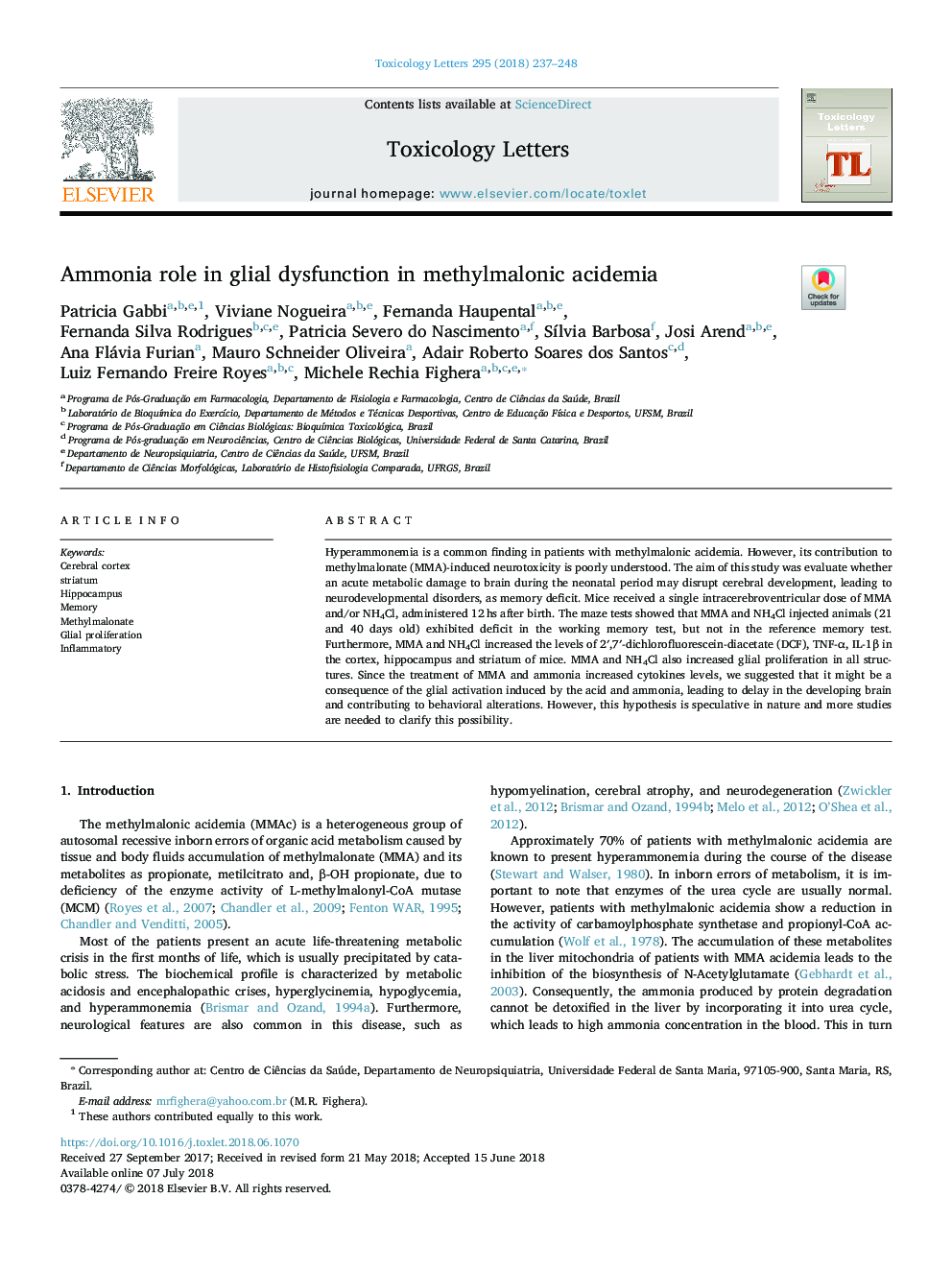| Article ID | Journal | Published Year | Pages | File Type |
|---|---|---|---|---|
| 8553112 | Toxicology Letters | 2018 | 12 Pages |
Abstract
Hyperammonemia is a common finding in patients with methylmalonic acidemia. However, its contribution to methylmalonate (MMA)-induced neurotoxicity is poorly understood. The aim of this study was evaluate whether an acute metabolic damage to brain during the neonatal period may disrupt cerebral development, leading to neurodevelopmental disorders, as memory deficit. Mice received a single intracerebroventricular dose of MMA and/or NH4Cl, administered 12â¯hs after birth. The maze tests showed that MMA and NH4Cl injected animals (21 and 40 days old) exhibited deficit in the working memory test, but not in the reference memory test. Furthermore, MMA and NH4Cl increased the levels of 2â²,7â²-dichlorofluorescein-diacetate (DCF), TNF-α, IL-1β in the cortex, hippocampus and striatum of mice. MMA and NH4Cl also increased glial proliferation in all structures. Since the treatment of MMA and ammonia increased cytokines levels, we suggested that it might be a consequence of the glial activation induced by the acid and ammonia, leading to delay in the developing brain and contributing to behavioral alterations. However, this hypothesis is speculative in nature and more studies are needed to clarify this possibility.
Related Topics
Life Sciences
Environmental Science
Health, Toxicology and Mutagenesis
Authors
Patricia Gabbi, Viviane Nogueira, Fernanda Haupental, Fernanda Silva Rodrigues, Patricia Severo do Nascimento, SÃlvia Barbosa, Josi Arend, Ana Flávia Furian, Mauro Schneider Oliveira, Adair Roberto Soares dos Santos, Luiz Fernando Freire Royes,
